 July 21, 2016 John E. Ross, KD8IDJ, Editor
| ||||||
Amateur Radio Plays Key Role in Major FEMA Earthquake Disaster Exercise Amateur Radio played a major role in meeting the objectives of the June 6-10 Cascadia Rising 2016 Federal Emergency Management Agency (FEMA) exercise in the Pacific Northwest. In the exercise scenario, a magnitude 9.0 earthquake and consequent tsunami has struck the Pacific Northwest, causing a blackout of all conventional "Amateur Radio operators not only provided communications continuity for Emergency Management Agencies, they worked with the Washington State Patrol, Washington State Guard, Washington National Guard, and the Federal Aviation Agency," ARRL Western Washington Section Manager Monte Simpson, AF7PQ, said in his Western Washington Section after-action report, released this week. Simpson is also Washington's State RACES Officer. He said radio amateurs supported approximately 32 city, county, state, tribal, and federal agencies during the event.
"We were able to support all our served agencies and clients," Simpson recounted. "Volunteers were able to provide communications support on location and during the planned participation period." He said US Amateur Radio responders established cross-border communication with the emergency operations center in Langley, British Columbia, which was holding its own province-wide exercise, Coastal Response. "Overall, our objectives of being able to communicate with external agencies via voice and Winlink were achieved," Simpson said. "It was great to be able to participate in an exercise of this magnitude to get a feeling for what it would be like to have this many people trying to send and receive data. All of our operators felt this was very beneficial." Simpson said that including Amateur Radio as "an actual functional part" of Cascadia Rising was a big plus, and that the participants felt they were "actually part of the team and not some auxiliary group that was being tolerated." Among his recommendations, Simpson said there should be more standardization on language and forms, as well as coming up with a method of establishing contact with communities that lack communication if repeaters go down. He also advised that ARES and RACES teams exercise their equipment on a regular basis, to avoid unexpected outages and failures during a real-world event. Future FAA Rules Could Affect Some Amateur Radio Antenna Support Structures Yet-to-be-developed Federal Aviation Administration (FAA) rules stemming from the recent passage in Congress of H.R. 636, the FAA Reauthorization Act, could pose additional marking requirements for a small number of Amateur Radio towers. The bill instructs the FAA to enact rules similar to state-level statutes now in place that are aimed at improving aircraft safety in the vicinity of meteorological evaluation towers (METs) set up in rural areas. In the wake of fatal crop dusting aircraft collisions with METs, often erected on short "The FAA Reauthorization Act has very little application to Amateur Radio antennas. We will have a good opportunity to address the final FAA rules through the normal rulemaking process," Imlay said. "We'll be meeting soon with FAA officials to learn their intentions as well as to advance our own concerns to the agency. Uniform federal regulation is beneficial to hams, because it eliminates a patchwork of state statutes that can impose significant constraints on ham antennas in rural and agricultural areas." The FAA Reauthorization Act gives the FAA 1 year to issue regulations requiring the marking of towers covered by the new legislation. Marking of towers covered by the legislation will be in the form of painting and lighting in accordance with current FAA guidelines.
The law covers towers that are "self-standing or supported by guy wires and ground anchors;" are 10 feet or less in diameter at the above-ground base, excluding concrete footings; are between 50 feet above ground level at the highest point and not more than 200 feet above ground level; have accessory facilities on which an antenna, sensor, camera, meteorological instrument, or other equipment is mounted, and are located outside the boundaries of an incorporated city or town or on land that is undeveloped or used for agricultural purposes. Imlay said the law excludes towers erected adjacent to a house, barn, electric utility station, or other building, or within the curtilage (enclosed area occupied by a dwelling, grounds, and outbuildings) of a farmstead, among other exclusions. "We do not anticipate that a significant number of Amateur Radio antennas will be subject to these rules," Imlay said, "but we need to monitor the FAA rulemaking process carefully to head off requirements that could put the cost of installing and maintaining affected structures out of any reasonable reach." Read more. ARRL Central Division Director Dick Isely, W9GIG, Steps Down Saying it was time that the ARRL Central Division had younger leadership, Central Division Director Dick Isely, W9GIG, of Saint Charles, Illinois, has resigned from the League's Board of Directors. He has been succeeded by Vice Director Kermit Carlson, W9XA, of Batavia, Illinois. "I'm 77 years old, and I still have pretty good health, despite my slow recovery from a shingles attack that hit me last December," Isely said in a public announcement. "However, it's time that you have a younger Central Division Director." Isely and Carlson were re-elected last year without opposition, and Isely expressed confidence that Carlson would "do a better job" in the Director's chair.
Isely tendered his resignation during the July 2016 ARRL Board of Directors meeting over the weekend in Windsor, Connecticut, and, acting on Carlson's nomination, Isely's Board colleagues elected him as an ARRL Honorary Vice President. "I have thoroughly enjoyed meeting and talking with many of you over these many years, and, from time to time, there will be future opportunities for this activity," Isely's announcement concluded. During his time on the Board, Isely served as a member of the ARRL Executive Committee as well as on the Board's Administration and Finance and Membership Services committees. He chaired the CEO Search Committee after former ARRL CEO David Sumner, K1ZZ, announced his retirement in 2015. Isely also has been among the ARRL Board members active in promoting the Amateur Radio Parity Act on Capitol Hill. Isley became the ARRL Central Division Director in 2001, succeeding Ed Metzger, W9PRN, and he was an ARRL Foundation director from 2007 until his resignation from the Board. He had served as ARRL Foundation Vice President since 2008. ARRL Great Lakes Director Dale Williams, WA8EFK, has been named to replace Isely on the ARRL Foundation Board. Isely is a graduate of the University of Missouri and a retired US Navy and American Airlines pilot. He's an ARRL and an AMSAT Life Member and has been a radio amateur since 1977. Isely helped organize the National Frequency Coordinators' Council and served 4 years as a director. Carl Luetzelschwab, K9LA, Appointed Central Division Vice Director ARRL President Rick Roderick, K5UR, has appointed Carl Luetzelschwab, K9LA, of Fort Wayne, Indiana, as Central Division Vice Director. He succeeds Kermit Carlson, W9XA, who became the Division's Director upon the resignation of Dick Isely, W9GIG, on July 16. Luetzelschwab said he plans to bring lots of energy to the job and to be visible to Central Division members.
"It is an honor to serve and give back to the Amateur Radio service for all that it has given me over the years," Luetzelschwab said. "I am looking forward to working with Director Carlson, whom I have known for a number of years, and I would like to give a big 'thank you' to retired director Dick Isely for his friendship and many years of service. I hope to emulate his visibility and approachability." Luetzelschwab has been a radio amateur since 1961. His interests include propagation, DXing, antennas, vintage equipment, and contesting. He served as National Contest Journal (NCJ) editor from 2002 until 2007 and, until 2015, contributed the "Propagation" column to NCJ and articles to other Amateur Radio publications. Luetzelschwab received The Bill Orr, W6SAI, Technical Writing Award for 2013 for his article "The Sun and the Ionosphere," which appeared in the March 2013 issue of QST and won the March QST Cover Plaque Award for the same article. His website offers considerable information on propagation and related subjects. He's been on several DXpeditions and is at the top of the DXCC Honor Roll. Luetzelschwab holds both bachelor's and master's degrees in electrical engineering from Purdue University. He retired in 2013, after 41 years as an RF design engineer. His wife Vicky is AE9YL. The Doctor Will See You Now!
Sponsored by DX Engineering, "ARRL The Doctor is In" is an informative discussion of all things technical. Listen on your computer, tablet, or smartphone -- whenever and wherever you like! Every 2 weeks, your host, QST Editor in Chief Steve Ford, WB8IMY, and the Doctor himself, Joel Hallas, W1ZR, will discuss a broad range of technical topics. You can also e-mail your questions to doctor@arrl.org, and the Doctor may answer them in a future podcast. Enjoy "ARRL The Doctor is In" on Apple iTunes, or by using your iPhone or iPad podcast app (just search for "ARRL The Doctor is In"). You can also listen online at Blubrry, or at Stitcher (free registration required, or browse the site as a guest) and through the free Stitcher app for iOS, Kindle, or Android devices. If you've never listened to a podcast before, download our beginner's guide. The National Parks on the Air Update The ARRL National Parks on the Air (NPOTA) program now has more than one-half million contacts resulting from nearly 9000 activations of NPS units in 2016! As we've just crossed the halfway point of NPOTA, we hope to reach 1 million contacts by the end of the year.
The 37 activations on the schedule for the week of July 21-28 include Chaco Culture National Historical Park in New Mexico, and the Seattle Unit of the Klondike Gold Rush National Historical Park in Washington. Details about these and other upcoming activations can be found on the NPOTA Activations calendar. Keep up with the latest NPOTA news on Facebook. Follow NPOTA on Twitter (@ARRL_NPOTA). Amateur 47 GHz Allocation Avoids 5G Juggernaut in the US for Now, Worldwide Defense Continues There's good news regarding the future of Amateur Radio's primary allocation at 47 GHz in the US. Still a test bed for point-to-point propagation experimentation by dedicated enthusiasts, the 47-47.2 GHz band is among those under consideration at the next World Radiocommunication Conference in 2019 (WRC-19) to accommodate so-called 5G wireless broadband devices. Early this year, some FCC commissioners indicated they would include bands on the WRC-19 agenda in the Commission's "Spectrum Frontiers" 5G initiative. As the Commission put it this week as it made nearly 11 gigahertz of spectrum above 24.25 GHz available for licensed, unlicensed, and shared use: "High-band millimeter wave spectrum is key to unlocking the potential for 5G." The FCC's Spectrum Frontiers included several of the bands set for consideration at WRC-19, but not the 47 GHz band -- although it did target 47.2-50.2 GHz.
"Maintaining the status quo in the 47-47.2 GHz band is a win for continued Amateur Radio use of the band in the United States, and amateurs continue to do great things there," ARRL Chief Technology Officer Brennan Price, N4QX, allowed. He pointed to the new US-Canada distance record of 215 kilometers set recently by radio amateurs from both countries. But, he suggested, Amateur Radio could be doing more at 47 GHz. Spectrum in the millimeter range has come under increasing scrutiny, because the demand for greater throughput has driven demand for bandwidth -- hence, the greater focus on spectrum above 24.25 GHz for next-generation 5G wireless broadband applications. As Price explains, it's easier to find 200 megahertz of spectrum in the millimeter range than at UHF. Price noted that radio amateurs have set up broadband networks on several lower microwave bands, nearly all of which are allocated to hams on a secondary basis. "The 47 GHz band is allocated to the Amateur Service and the Amateur-Satellite Service on a worldwide primary and exclusive basis," Price pointed out. "We don't have to work around others in this space." He suggested that Amateur Radio broadband experimenters consider and expand upon the work of Ted Rappaport, N9NB -- the founding director of NYU Wireless at New York University's Tandon School of Engineering -- whose investigations have demonstrated that the millimeter waves may serve next-generation broadband systems. "For a long time, millimeter waves were thought to be most suitable for the point-to-point work that radio amateurs perfected and continue to advance," Price said. "Ted's work indicates that point-to-multipoint systems are feasible at this range, and the world has taken notice." Price stressed the need going forward for the worldwide Amateur Radio community to maintain a staunch defense of all spectrum allocated to the Service, as the 47 GHz band remains under consideration by other countries. The International Amateur Radio Union (IARU) is organizing the protective effort on this and other issues, as it continues to get ready for WRC-19, he added. Pikes Peak ARES Supports Pikes Peak International Hill Climb In late June, members of the Pikes Peak Amateur Radio Emergency Service (ARES) Region 2, District 2 team ("Pikes Peak ARES") supported the 100th anniversary running of the Pikes Peak International Hill Climb -- "The Race to the Clouds" -- the second-oldest motorsport event in the US (right behind the Indy 500). One hundred vehicles attempt the course, from a starting point of 9390 feet above sea level to the 14,110 foot summit. A good run is less than 10 minutes, although two made it in less than 9 minutes this year.
Once multiple vehicles are on the course, the pace of radio communication and message traffic becomes lightning fast, with brief tactical call signs interspersed with legal FCC IDs every 10 minutes. Launching vehicles from the starting line as frequently as every 60 seconds requires strict net discipline, the use of very specific terminology, the ability to pick out hard-to-read vehicle numbers streaking past at speeds in excess of 100 MPH and spot any problems, and being ready to quickly adapt from normal race pace to a full-on emergency. Led by veteran race operators Don Johnson, K0DRJ, at net control, Al Glock, KC0PRM, at liaison with race officials, and Dan Martin, KD0SMP, as the mission coordinator, the team handled hundreds of calls during the event. When a racer slammed into a guardrail and needed to be airlifted from the course, the ability to get the initial report to race officials and to maintain control of the net testified to the operators' skills.
The mountain and Colorado weather often throw curve balls at the operators and participants alike, and sometimes spectators misbehave, racers crash, and vehicles break down. Through it all, Pikes Peak ARES and associated Amateur Radio operators provide this volunteer service year after year. -- Thanks to Pikes Peak ARES EC John Bloodgood, KD0SFY, via The ARES E-Letter Two Young Radio Amateurs are First Americans to Take Part in YOTA Camp Two young ARRL members are among the more than 100 attending the Youngsters On The Air (YOTA) camp in the Austrian mountains this week. Sterling Coffey, N0SSC, of St Louis, Missouri, and Sam Rose, KC2LRC, of Syracuse, New York, are the first two Americans to take part in the week-long YOTA camp. Participants not only enjoy a variety of Amateur Radio activities, they hone their electronics and contesting skills and make new international friends. "Being at YOTA is really something beyond amazing," Coffey tweeted on July 17.
Rose, an electrical engineering graduate from Clarkson University, last year inaugurated the Collegiate Ham Radio Operators Facebook group, aimed at college ham radio club members interested in sharing and collaborating on college ham radio activities. He also spoke on "Advantages of College Ham Radio Clubs" at the Hamvention 2016 Youth Forum. Coffey, who majored in electrical engineering at the Missouri University of Science and Technology in Rolla, is a past ARRL Youth Editor who handled the Youth@HamRadio.Fun web column on the ARRL website. He served as a member of ARRL Ad-Hoc Committee on Youth in the Second Century, prior to the ARRL Centennial.
YOTA 2016 participants set up a 5 GHz HamNet Wi-Fi link to use in their Summits On The Air (SOTA) activation on July 21. The link will connect the team on the mountain with the YOTA base camp. The Austrian Amateur Radio Society ÖVSV, which is celebrating its 90th anniversary, is hosting the YOTA 2016 summer camp near Salzburg. OE2YOTA has been on air on various bands and modes. YOTA 2016 wraps up on July 23. In Brief....
The K7RA Solar Update Tad Cook, K7RA, Seattle, reports: All solar indices rose over the past week, and geomagnetic indicators were lower. Average daily solar flux rose from the previous 7 days at 52.6 to 58.1, and average daily sunspot numbers rose from 91.6 to 103.6. The average daily planetary A index went from 15.7 to 10.6, and the average daily mid-latitude A index dipped from 14.1 to 11.1.
Predicted planetary A index levels are at 16, 12, 10, and 8 on July 21-24; 5, 8, 12, 10, and 9 on July 25-29; 8 on July 30-31; 5 on August 1-2; 20 on August 3-4; 15 on August 5; 10 on August 6-7; 20, 8, 12, 10, and 8 on August 8-12; 5 on August 13-14; 8, 12, and 15 on August 15-17; 10 on August 18-19; 8 on August 20; 5 on August 21-23; 8 and 9 on August 24-25; 8 on August 26-27; 5 on August 28-29, and 20 on August 30-31. At 2341 UTC on July 19 the Australian Space Forecast Centre issued a geomagnetic disturbance warning: A shock wave signature was detected in the solar wind on 19 July at 2300 UTC. A geomagnetic sudden impulse is expected, followed by increased geomagnetic activity up to minor storm levels. The forecast anticipated increased geomagnetic activity due to coronal mass ejection over the July 20-22 period. Sunspot numbers for July 14 through 20 were 54, 73, 47, 51, 68, 58, and 56, with a mean of 52.6. The 10.7 centimeter flux was 95.1, 102.1, 106.6, 105.2, 107.1, 100.8, and 108, with a mean of 91.6. Estimated planetary A indices were 12, 11, 8, 6, 4, 10, and 23, with a mean of 15.7. Estimated mid-latitude A indices were 16, 10, 8, 10, 4, 11, and 19 with a mean of 14.1. Send me your reports and observations.
. . . . . . . This Week in Radiosport
See the ARRL Contest Calendar for more information. For in-depth reporting on Amateur Radio contesting, subscribe to The ARRL Contest Update via your ARRL member profile e-mail preferences. Upcoming ARRL Section, State, and Division Conventions
Find conventions and hamfests in your area.
. .
Subscribe to...
Free of charge to ARRL members...
| ||||||
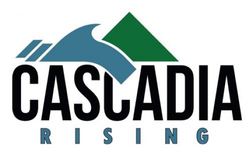 communication channels -- a natural opening for Amateur Radio to step in. ARES/RACES organizations in Oregon and Washington were heavily involved, and ARRL Headquarters was also in the loop. Upward of 500 Amateur Radio volunteers in Washington, Oregon, and Idaho took part in the exercise. Success of the exercise depended in large part on Amateur Radio point-to-point communication.
communication channels -- a natural opening for Amateur Radio to step in. ARES/RACES organizations in Oregon and Washington were heavily involved, and ARRL Headquarters was also in the loop. Upward of 500 Amateur Radio volunteers in Washington, Oregon, and Idaho took part in the exercise. Success of the exercise depended in large part on Amateur Radio point-to-point communication.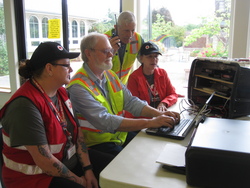
.jpg) notice, the National Transportation Safety Board (NTSB) recommended in 2013 that states enact laws -- sometimes called "crop duster" statutes -- requiring marking and registration of METs. While some state crop duster laws exempt ham radio towers, the federal legislation does not. ARRL General Counsel Chris Imlay, W3KD, said, however, that the list of exemptions in the federal legislation restricts application of the new rules to a very small subset of Amateur Radio towers.
notice, the National Transportation Safety Board (NTSB) recommended in 2013 that states enact laws -- sometimes called "crop duster" statutes -- requiring marking and registration of METs. While some state crop duster laws exempt ham radio towers, the federal legislation does not. ARRL General Counsel Chris Imlay, W3KD, said, however, that the list of exemptions in the federal legislation restricts application of the new rules to a very small subset of Amateur Radio towers..jpg)
.jpg)
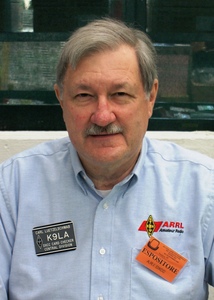
.jpg) "HF Propagation" is the topic of the current (July 14) episode of the "
"HF Propagation" is the topic of the current (July 14) episode of the "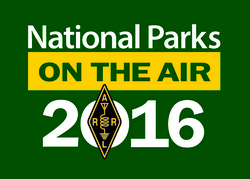 National Parks on the Air Chasers were recently treated to some rare NPOTA units in New York City, activated thanks to the efforts of Pete Kobak, K0BAK. On July 17, Kobak was able to activate Federal Hall National Memorial, Teddy Roosevelt's Birthplace National Historic Site, and the most recent addition to the National Park Service, Stonewall National Monument. Operating on HF from dense, urban areas is always challenging, and Kobak's activities proved no exception. Nonetheless, he was able to make a combined total of 66 contacts from the three units -- quite respectable, given the tough conditions.
National Parks on the Air Chasers were recently treated to some rare NPOTA units in New York City, activated thanks to the efforts of Pete Kobak, K0BAK. On July 17, Kobak was able to activate Federal Hall National Memorial, Teddy Roosevelt's Birthplace National Historic Site, and the most recent addition to the National Park Service, Stonewall National Monument. Operating on HF from dense, urban areas is always challenging, and Kobak's activities proved no exception. Nonetheless, he was able to make a combined total of 66 contacts from the three units -- quite respectable, given the tough conditions.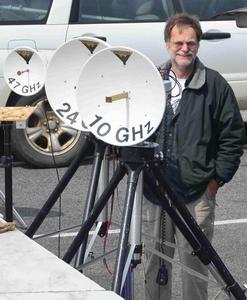
.jpg) Although the race occurred on Field Day weekend, Pikes Peak ARES deployed 27 operators along the course to provide vehicle tracking, alternate communication, course status, weather observations, and other functions. One operator comes from Texas each year to support the race, while most of the others were locals.
Although the race occurred on Field Day weekend, Pikes Peak ARES deployed 27 operators along the course to provide vehicle tracking, alternate communication, course status, weather observations, and other functions. One operator comes from Texas each year to support the race, while most of the others were locals. Such situations can be a matter of life or death, and fatalities have occurred during the event. Amateur Radio operators also were the first to notice debris and fluid on the course, alerting Race Safety officials who closed the course until the hazard could be cleared.
Such situations can be a matter of life or death, and fatalities have occurred during the event. Amateur Radio operators also were the first to notice debris and fluid on the course, alerting Race Safety officials who closed the course until the hazard could be cleared.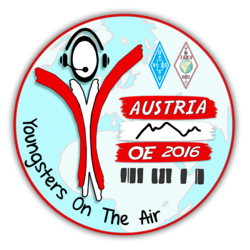 Begun in 2011, YOTA has grown exponentially since, and camps have been held in Romania, The Netherlands-Belgium, Estonia, Finland, and Italy. Since the IARU Region 1 General Conference in Albena, Bulgaria, in 2014, YOTA has been an official International Amateur Radio Union Region 1 (IARU-R1) activity. Open to participants ranging in age from 15 to 25, the sixth YOTA in Austria is the largest ever and the first to include young hams from the US and Asia. The Northern California DX Foundation (
Begun in 2011, YOTA has grown exponentially since, and camps have been held in Romania, The Netherlands-Belgium, Estonia, Finland, and Italy. Since the IARU Region 1 General Conference in Albena, Bulgaria, in 2014, YOTA has been an official International Amateur Radio Union Region 1 (IARU-R1) activity. Open to participants ranging in age from 15 to 25, the sixth YOTA in Austria is the largest ever and the first to include young hams from the US and Asia. The Northern California DX Foundation (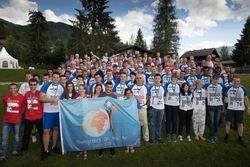 YOTA 2016 has featured a full slate of Amateur Radio activities. A successful Amateur Radio on the International Space Station (
YOTA 2016 has featured a full slate of Amateur Radio activities. A successful Amateur Radio on the International Space Station ( ARRL CEO Tom Gallagher, NY2RF, to Keynote W9DXCC DX Convention Banquet: The 64th annual
ARRL CEO Tom Gallagher, NY2RF, to Keynote W9DXCC DX Convention Banquet: The 64th annual .jpg) "Triumvirate" to Oversee CQ World Wide DX Contest: CQ World Wide DX Contest Director Doug Zwiebel, KR2Q,
"Triumvirate" to Oversee CQ World Wide DX Contest: CQ World Wide DX Contest Director Doug Zwiebel, KR2Q, 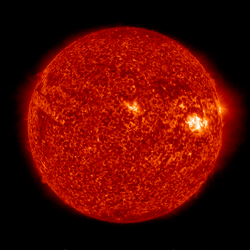 The late July 20 predictions for solar flux show 105 on July 21-22; 100 and 95 on July 23-24; 90 on July 25-26; 85 and 80 on July 27-28; 70 on July 29-August 4; 80 and 95 on August 5-6; 105 on August 7-16; 100 on August 17-18; 95, 90, 80, and 75 on August 19-22, and 70 on August 23-31. The next few days following the end-of-August prediction show a sharp rise in solar flux.
The late July 20 predictions for solar flux show 105 on July 21-22; 100 and 95 on July 23-24; 90 on July 25-26; 85 and 80 on July 27-28; 70 on July 29-August 4; 80 and 95 on August 5-6; 105 on August 7-16; 100 on August 17-18; 95, 90, 80, and 75 on August 19-22, and 70 on August 23-31. The next few days following the end-of-August prediction show a sharp rise in solar flux.








